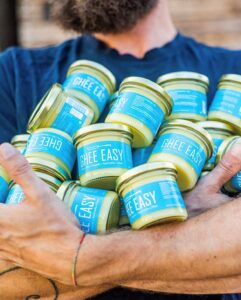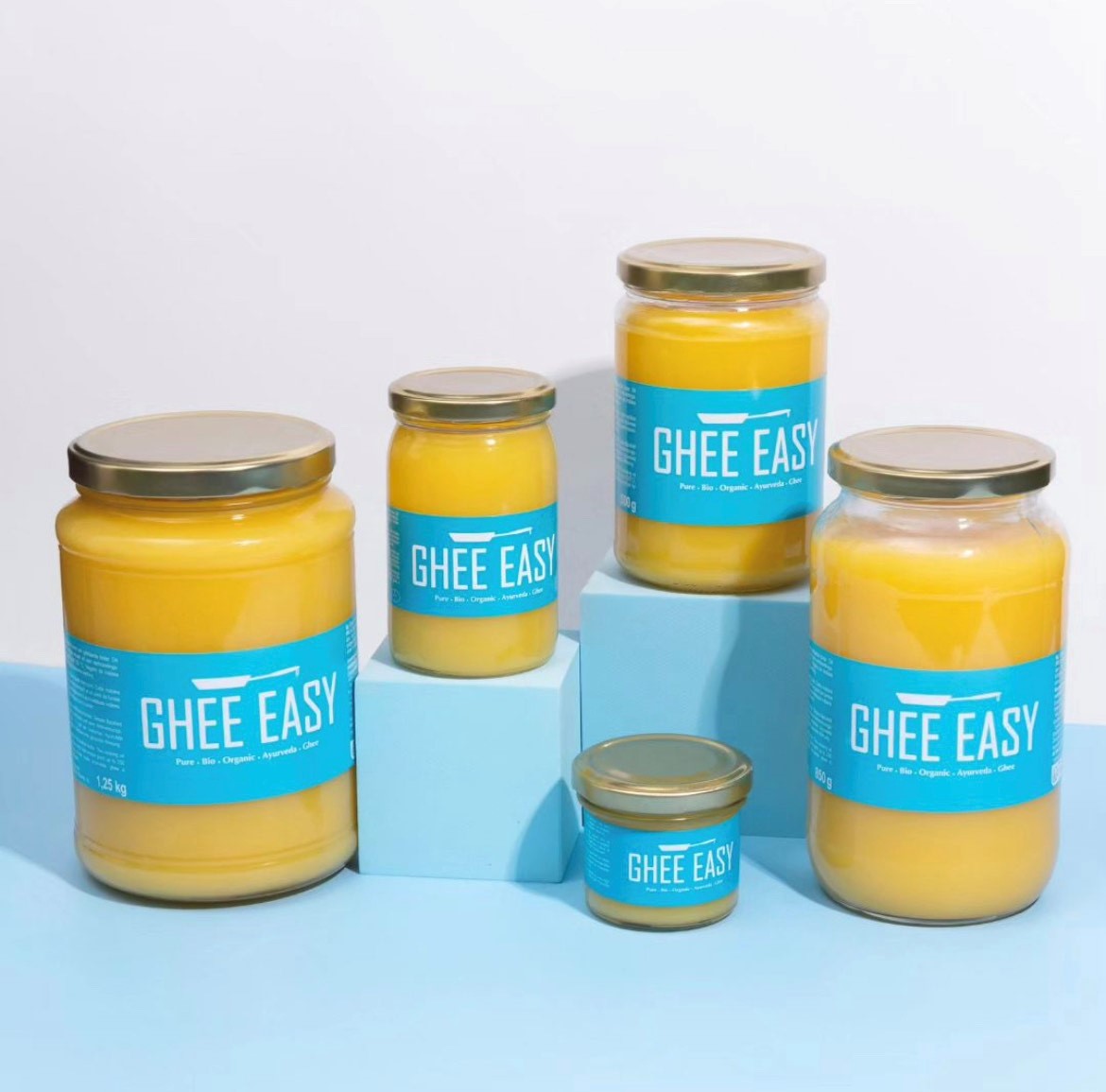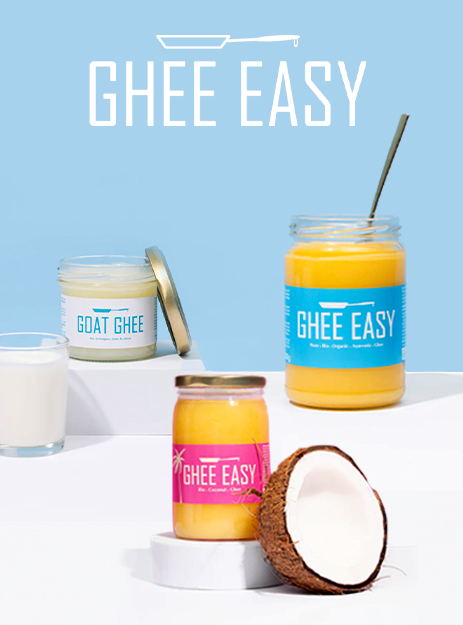Butter ghee originates from the Indian subcontinent, where it has been used for years in cooking. Its origins date back to the ancient civilisations of India, where ghee was not only a staple food, but also a sacred ingredient in religious rituals and healing practices.
The warm climate of the region played an important role in the development of ghee, as it was an effective way to preserve butter without it spoiling quickly.
What is ghee butter?
Ghee is a clarified butter obtained by a slow cooking process of regular butter, which separates the milk solids and water from the fat. The result is a rich, golden substance with a more concentrated flavour and higher smoke point than traditional butter. By eliminating the milk solids, ghee is a great option for those who are lactose or casein intolerant.

Properties and benefits of butter ghee
Butter ghee is notable for its high content of healthy fats and for its richness in fat-soluble vitamins such as A, D, E and K. These vitamins are essential for eye health, the immune system and bone formation. It also contains butyric acid. This is a short-chain fatty acid that has anti-inflammatory effects and digestive benefits.

Among the main benefits of ghee are:
- Improves digestion. Butter ghee helps stimulate the production of gastric acid, which promotes better digestion of food.
- Natural anti-inflammatory. The butyric acid it contains helps reduce inflammation in the body, which is beneficial for those suffering from inflammatory bowel diseases.
- Energy source. Its short and medium chain fatty acids are metabolized quickly, providing energy efficiently.
- Cardiovascular health. Although ghee is a saturated fat, studies suggest that, consumed in moderation, it does not negatively affect cholesterol and may contribute to cardiovascular health.

What is butter ghee used for?
Ghee is extremely versatile in cooking. Thanks to its high smoke point (around 250°C), it is ideal for frying, sautéing and baking as it does not burn as easily as other fats. In addition, its deep flavor with a touch of nuttiness gives a special touch to dishes of all kinds, from curries to desserts.
Outside of the kitchen, ghee is used in Ayurvedic medicine to balance vital energies, which are applied in massages or topical treatments to hydrate the skin and promote healing.
Types of ghee
Natural ghee
Natural Ghee is the product in its most natural variant. It is suitable for all baking and roasting jobs and ensures that food is perfectly cooked without adding flavour.
Rosemary ghee
Rosemary ghee is flavored with organic rosemary. It has a rich flavor, long shelf life, high nutritional value and is easy to use.
Goat butter ghee
Goat ghee is a tasty and popular cooking option. It is ideal for giving more flavor to dishes and is especially popular in baking and cooking. It has a specific flavor that many of our customers appreciate.
Coconut ghee
Coconut ghee is a product widely used in cooking, known for its flavor and texture. It is widely used to give dishes an extra touch of flavor and is popular in baking and cooking. Coconut butter ghee has a unique flavor that is appreciated by many consumers and is a highly sought after ingredient by both home and professional cooks.
Difference between ghee and traditional butter
Although ghee and butter have a common origin, there are several key differences between the two:
- Preparation process. Butter is a simpler product, while ghee goes through an additional cooking and clarifying process, which separates the milk solids from the fat.
- Nutritional content. Ghee is purer in fat and contains less dairy protein, making it more suitable for people with intolerances.
- Smoke point. The smoke point of ghee is higher (250°C versus 160°C for butter). This makes it more suitable for cooking at high temperatures without burning.
- Flavor and aroma. Ghee has a more concentrated flavor, with nutty and caramel notes, while butter is smoother and creamier.
- Conservation. Containing no water or milk solids, ghee is best kept at room temperature, while butter needs refrigeration.

Culinary uses of butter ghee
Butter ghee is highly versatile in cooking, thanks to its deep flavor and high smoke point. These are some of the main culinary uses.
Fry and sauté
Due to its high smoke point, ghee is ideal for frying and sautéing as it does not burn easily like regular butter or vegetable oils. It is used to fry vegetables, meats and fish, providing a more intense and nutty flavor.
Bake
Butter ghee can be used in baking recipes such as cookies, cakes or breads, providing a softer texture and a richer, more complex flavor.
Stews and curries
In Indian cuisine, ghee is an essential ingredient in dishes such as curries, dhal (lentils) and biryanis, where it is added to enrich flavors and give a smooth, creamy texture to foods.
Sauces and dressings
Butter ghee is also used as a base for making sauces, especially in recipes that call for clarified butter, such as French beurre noisette. It can also be used to drizzle roasted vegetables or as a dressing on salads.
Spread and accompany
Like regular butter, it can be spread on bread, toast or tortillas to give them a richer flavor.
Drinks
Some traditional and modern practices include ghee butter in drinks such as bulletproof coffee or infusions. This is due to its content of healthy fats, which provide sustained energy and improve nutrient absorption.
Premium butter ghee
Ghee Easy is a premium brand founded by three friends who made ghee clarified butter in a small kitchen in Amsterdam. It’s now made with a larger team at Bunnik from delicious organic butter from the Netherlands. In addition, they have different variants of ghee, natural, rosemary, goat and coconut.


